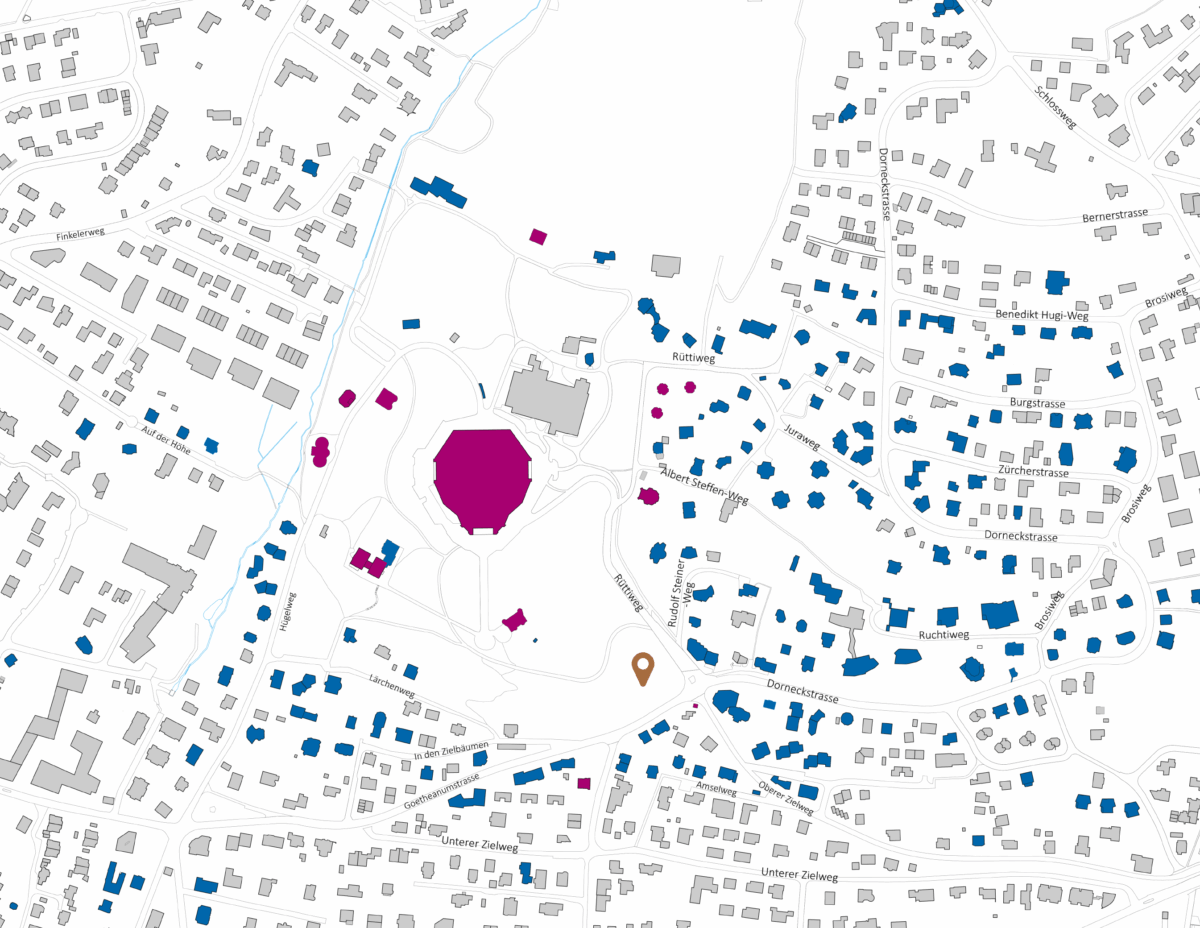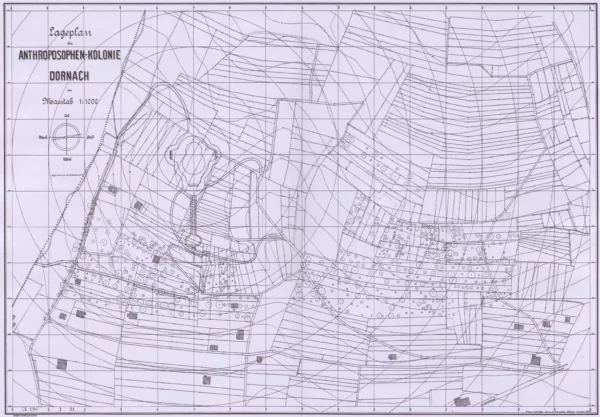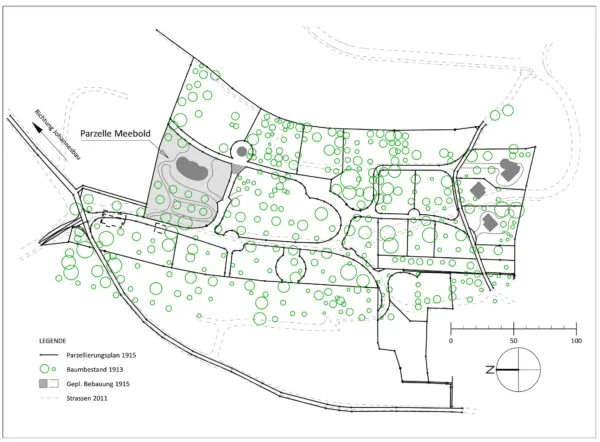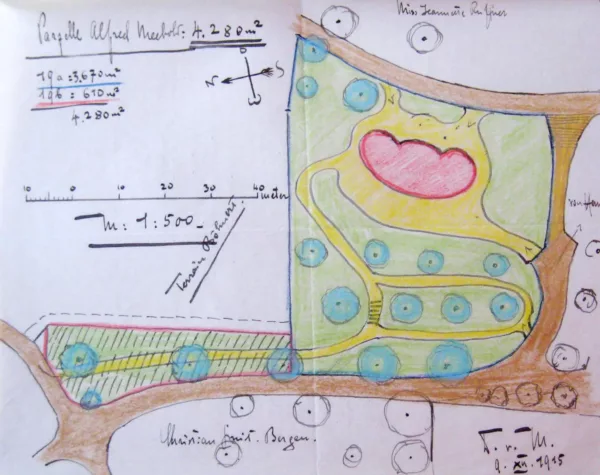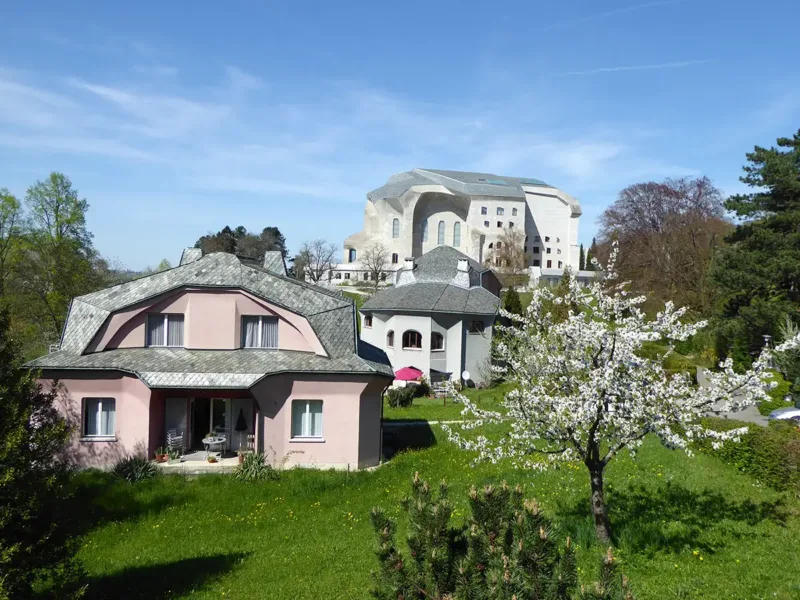6. Colony
Diverse design language of the colony
Part of the whole
The original idea of Rudolf Steiner, the founder of anthroposophy, and his colleagues was to build a garden city on a smaller scale around the Johannesbau, later the Goetheanum, which was erected in 1913, and its successor from 1925. This settlement, known as a colony, was intended to enable members of the anthroposophical society to live and work close to their spiritual center. This plan was put into practice in 1914 with the founding of a cooperative and the acquisition of large areas of land. Based on the comprehensive life-reform approach of anthroposophy, the settlement, like the Goetheanum, was to have a uniform style in keeping with the new world view (Station 5).
To safeguard the vision of the settlement, the statutes granted the Johannesbauverein a right of first refusal for the colony plots in the event of any transfer of the land to persons outside the Anthroposophical Society, defined restrictions on use and set up a design commission to examine the building designs for compliance with the design aspects. Although the restrictions were already lifted in the mid-1920s, many buildings were built in the following decades in an attempt to comply with the principles mentioned and form defining elements of the atmosphere on Dornach Hill.
Task: Discover the round plot and try to empathize with the original planning.
Discover the surroundings
Further stations
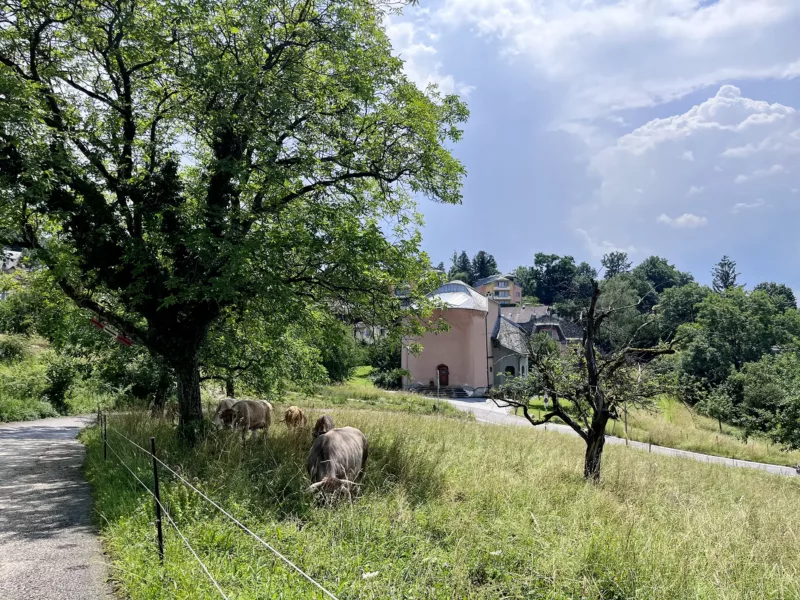
1. Landscape
The Goetheanum and the surrounding sculpturally and organically shaped houses were planned into an old cultural landscape. Architecture, nature and landscape design were to form a special unity and enhance each other’s impact.
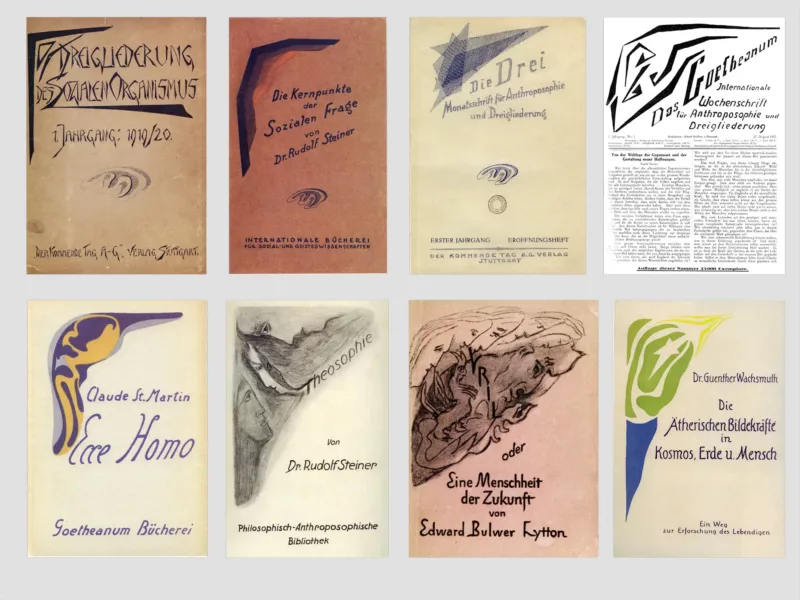
2. Links
The buildings of the Dornach Colony were consciously created from the anthroposophical world view. They are connected in many ways with other branches of anthroposophy, as an expression, as a framework, as the result of development processes.
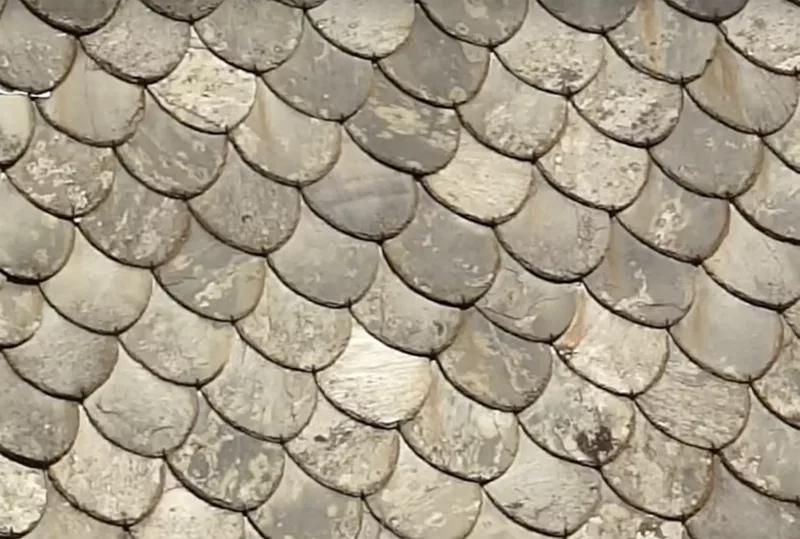
3. Material
In addition to the forms, some special materials also characterize the building on the Dornach hill. Norwegian slate, exposed concrete or colored plaster, wood are important elements of the special atmosphere around the Goetheanum.
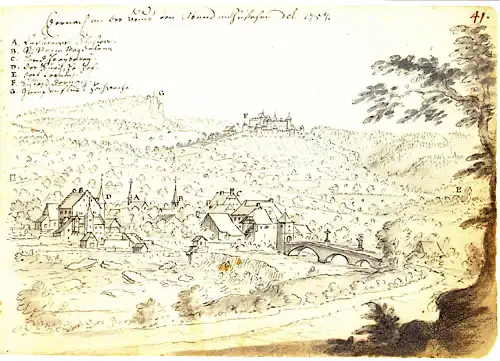
4. Environment
From the very beginning, the links to the Dornach community were diverse and not always clear. The anthroposophists who wanted to build were an economic factor, a foreign body, an enrichment and a change agent. Without them, however, neither the Anthroposophical Society nor Dornach would be what they are today.
Location
